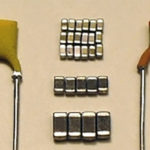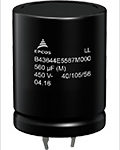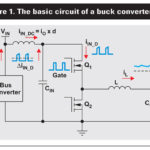(editor’s note: Intrigued by these power electronics problems? Have a question or optional solution? Then click the “Read more” link and follow the conversation on EDAboard.com or log in to EDAboard and participate in the power electronics forum thread.) Core (Inductor) selection for PFC – I am designing a PFC for my application and need […]
Capacitors
Top power electronics threads on EDAboard.com – October
(editor’s note: Intrigued by these power electronics problems? Have a question or optional solution? Then click the “Read more” link and follow the conversation on EDAboard.com or log in to EDAboard and participate in the forum thread.) Ferrite cores in push-pull topology – Can anybody advise me on the choice of toroidal cores for an […]
Flat aluminum electrolytic capacitors targets power supplies for critical systems applications
Cornell Dubilier Electronics, Inc. (CDE) has introduced the latest in its series of Flatpack ruggedized flat aluminum electrolytic capacitor, the MLSG. This series targets compact power supply applications in military and aerospace, as well as other critical systems. Design enhancements and a new electrolyte push the MLSG to nearly double the operating life of its […]
What engineering school doesn’t teach
about ceramic capacitors
Ceramics comprise the most widely used non-polarized dielectrics. The reason is they offer attractive combinations of volumetric efficiency, manufacturability, and cost. Some applications – such as high-frequency RF signal chains and high-precision measurement circuits – take advantage of the parametric performance available from other dielectrics, but currently available ceramic formulations perform well in a wide […]
Advances in dc-link power capacitor technology
Compact and efficient dc-links have become practical thanks partly to ceramic capacitor designs that excel at thermal stability and feature low parasitic inductance. Matt Reynolds, EPCOS, a TDK Group Company The technology behind capacitors has been around since late 1745 when a German physicist found that an electrical charge could be stored by connecting a […]
What engineering school doesn’t teach
about electrolytic capacitors
Why are electrolytic capacitors such a pain? Several reasons come to mind, but the A-#1, everybody’s-favorite is (or should be): reliability. In many product types, electrolytic caps exhibit field-failure rates that top the list of component-caused system failure. For example, a survey of system failure analyses presented by NIC Components concluded that capacitors accounted for […]
Multilayer Ceramic Capacitors are RoHS, REACH, and AEC-Q200 compliant
KEMET, a leading global supplier of electronic components, today announced the expansion of its Goldmax and Aximax leaded Multilayer Ceramic Capacitor (MLCC) product line to include 100% RoHS, REACH and AEC-Q200 compliant offerings. These radial and axial components feature industry-leading voltage ranges, rendering them ideal for the automotive market. Automotive grade Goldmax and Aximax capacitors are […]
Aluminum electrolytic capacitors use snap-in design
TDK Corporation announced compact versions within the B43640 and B43644 series of aluminum electrolytic capacitors with a snap-in design for rated voltages of 400 V and 450 V. In comparison with the previous versions they are up to 15 percent more compact. All types are suitable for a maximum operating temperature of 105 °C. All […]
450-Vac film caps house two capacitors in one aluminum enclosure
TDK Corporation presents two new series of robust EPCOS alternating current (AC) capacitors. Both the cans and the tops of the components are constructed of aluminum, making them particularly robust. All capacitors in the B33331* and B33335* series are CE-compliant, have both VDE approval in accordance with EN/IEC 60252-1 Class A and UL approval. Thanks […]
How to select input capacitors for a buck converter
by Maniing Xie, System Application Engineer, Power Design Systems, Texas Instruments Electromagnetic interference (EMI) can create serious issues for manufacturers in an industrial environment. A buck converter generates a pulsating ripple current with high di/dt at the input. Without input capacitors, ripple current is supplied by the upper power source. Printed circuit board (PCB) resistance […]










